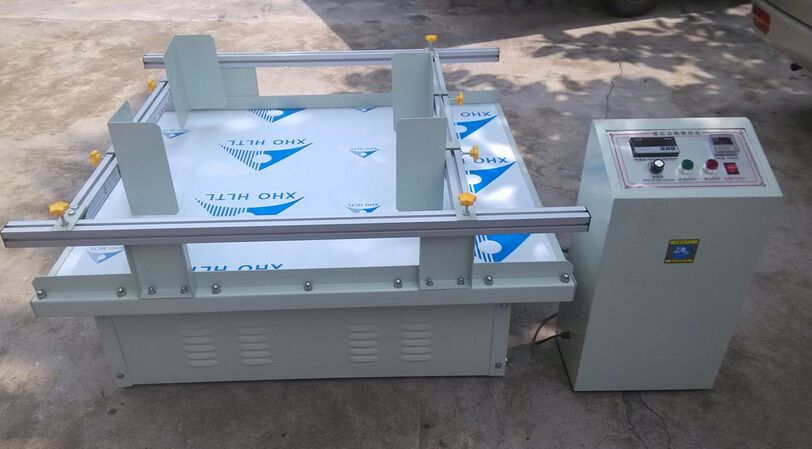ASTM D3580-20 Verification of Vibration Resistance
The ASTM D3580-20 standard specifies a method to verify that packaging materials and systems can withstand vibration. This test is critical for industries where products are subject to rough handling, such as logistics, pharmaceuticals, electronics manufacturing, and automotive sectors.
Vibration resistance testing ensures that packages maintain their integrity during transport and handling, which prevents product damage and safeguarding the brand reputation of manufacturers. The test involves placing a sample under controlled vibration conditions for a specified duration using specific parameters defined in ASTM D3580-20.
The process starts with specimen preparation where the packaging is subjected to a series of steps including cleaning, marking, and conditioning as per the standard's requirements. After preparation, the package undergoes the actual test by being placed on a shaker table, which simulates real-world transport conditions. The shaker operates at various frequencies and amplitudes for specific time intervals.
The testing apparatus typically includes a programmable shaker controlled by a computer to apply vibrations according to predetermined parameters set forth in ASTM D3580-20. The parameters include frequency, amplitude, and duration of the vibration, which are critical for replicating real-world conditions accurately.
Upon completion of the test, inspection follows to ensure that no damage has occurred to the packaging or its contents. This includes visual inspections as well as functional checks if applicable. If any damage is detected, it indicates a failure according to ASTM D3580-20 criteria.
The results are then compiled into detailed reports providing comprehensive information about the performance of the package under the specified vibration conditions. These reports serve as critical documentation for quality assurance and compliance purposes.
By adhering strictly to ASTM D3580-20, laboratories like ours ensure that we deliver accurate, reliable data that can be trusted by clients in various industries. This testing method helps manufacturers make informed decisions about their packaging design and materials selection based on empirical evidence rather than assumptions.
The importance of this type of test cannot be overstated, especially given the increasing complexity of supply chains today. Ensuring that your product's packaging meets stringent standards not only protects against potential losses due to damaged goods but also enhances customer satisfaction by delivering undamaged products at their destination.
Applied Standards
| Standard Number | Description |
|---|---|
| ASTM D3580-20 | Vibration resistance test method for packaging materials and systems. |
| ISO 16779:2015 | Transport simulation tests for packages - Determination of performance under simulated road transport conditions. |
| Standard Number | Description |
|---|---|
| EN 13822-4:2016 | Determining resistance to mechanical loading and impact for packaging systems - Part 4: Vibration testing. |
| IEC 60068-27-4 | Environmental testing - Part 27: Tests for non-electrical products - Section 4: Vibration tests. |
Customer Impact and Satisfaction
Implementing ASTM D3580-20 verification of vibration resistance ensures that packaging is robust enough to withstand the rigors of transportation. This translates directly into higher customer satisfaction as more products reach their destinations intact.
For quality managers and compliance officers, knowing that your packaging has passed rigorous testing according to international standards provides peace of mind regarding product integrity during transit. It also helps in meeting regulatory requirements without unnecessary rejections or recalls.
R&D engineers benefit greatly from such tests as they provide valuable feedback on material performance under stress conditions. This information can be used iteratively to improve future designs, making them more resilient against external factors like vibration.
From a procurement perspective, ensuring that suppliers meet these stringent standards helps maintain consistent quality across batches and deliveries. It also fosters long-term partnerships with reliable vendors who understand the importance of meeting high-quality benchmarks.
International Acceptance and Recognition
The ASTM D3580-20 standard is widely accepted globally due to its comprehensive approach towards simulating real-world transportation scenarios. Many countries recognize this standard as a benchmark for ensuring product safety during shipment.
Compliance with ASTM D3580-20 enhances the reputation of both manufacturers and suppliers, making it easier for them to penetrate international markets. Buyers increasingly seek out products that have undergone thorough testing according to recognized standards like ASTM D3580-20.
The acceptance of this standard across various industries contributes significantly to global supply chain efficiency by reducing instances of product damage during transit. This leads to cost savings for companies involved in logistics and distribution, ultimately benefiting consumers who receive undamaged products at lower costs.





